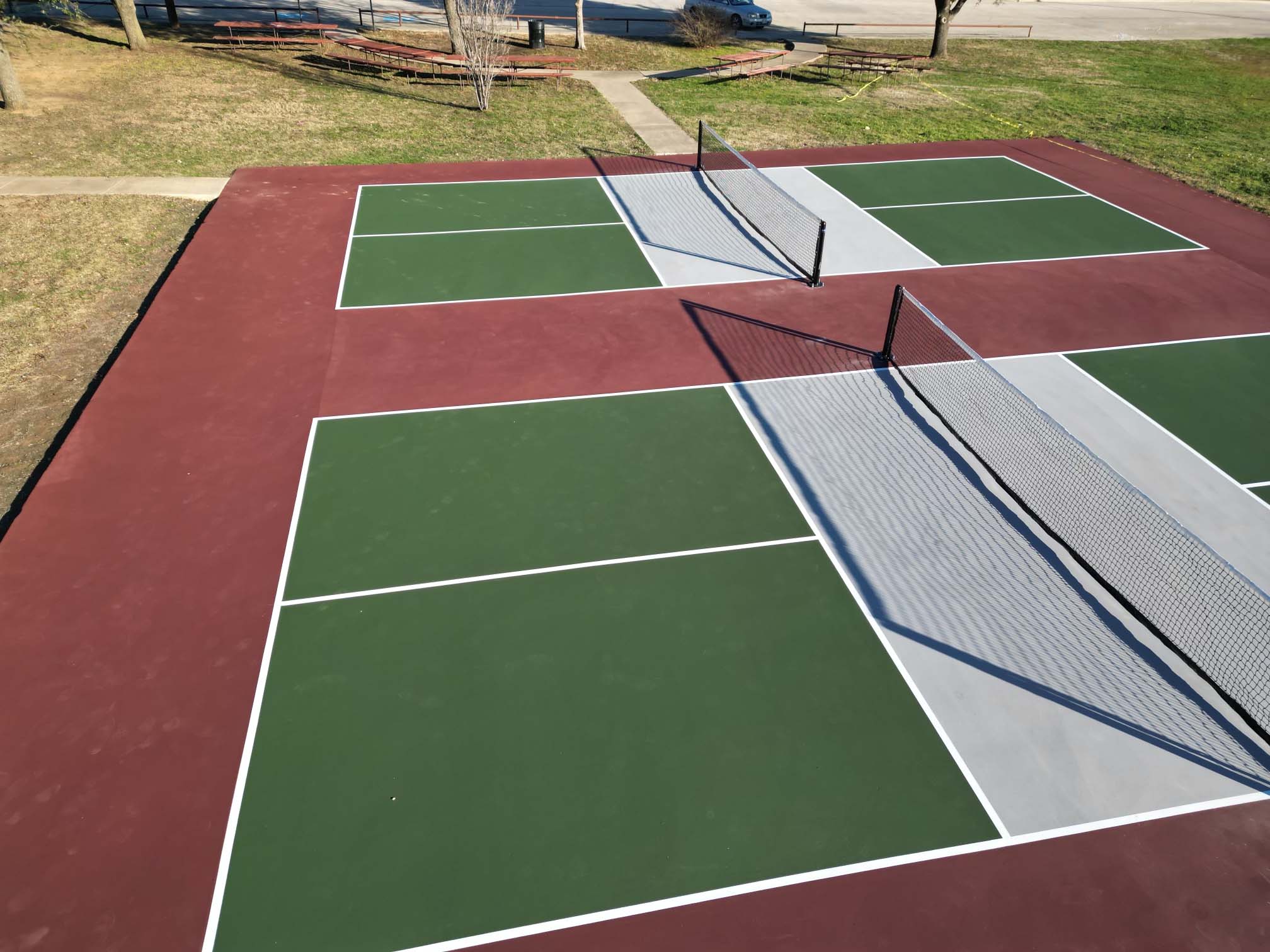Pickleball Court Construction-- Crucial Tips for a Long Lasting Court
Pickleball Court Construction-- Crucial Tips for a Long Lasting Court
Blog Article
Sustainable Practices in Pickleball Court Building And Construction You Ought To Know
As the popularity of pickleball proceeds to climb, so also does the demand for sustainable techniques in court building. The influence of these techniques expands much past the court itself.
Selecting Eco-Friendly Materials
Selecting environment-friendly materials is a vital action in the building of lasting pickleball courts. The option of lasting products not only decreases environmental effect yet also enhances the long life and efficiency of the court. Secret materials include recycled rubber for the surface area, which offers superb resilience and shock absorption while diverting waste from garbage dumps.
In addition, utilizing locally sourced products lowers transport discharges and sustains local economic climates. Pickleball court construction. Using indigenous hardwoods for fence and seating can give a sustainable aesthetic while ensuring resilience against the elements.
Including absorptive materials for court structures can better add to sustainability by enabling for all-natural water drainage and decreasing overflow. These selections not only safeguard local communities however also promote much healthier play environments.
Reliable Drain Solutions
While the option of environment-friendly materials is vital, executing effective drainage options is similarly crucial for maintaining sustainable pickleball courts. Proper drainage not just shields the court surface area from water damage but also lessens disintegration and runoff, advertising environmental stability.
Efficient water drainage systems can consist of permeable paving, which allows water to infiltrate the ground instead of pooling externally. This decreases the chance of standing water, which can result in mold and mildew and other upkeep concerns. In addition, incorporating strategically placed drain networks and swales can route excess water away from the court area, guaranteeing a completely dry playing surface and protecting against dirt disintegration.
Making use of native greenery in the landscape design around the courts can better improve drainage by soaking up excess water and decreasing drainage. These plants require less watering and advertise biodiversity, lining up with sustainable methods.
Additionally, it is crucial to on a regular basis preserve the water drainage system to ensure its long-lasting effectiveness. This includes clearing particles and monitoring for blockages. By focusing on reliable drainage services, pickleball court producers can substantially add to the sustainability and long life of the center, ultimately profiting both players and the setting.
Energy-Efficient Lighting Options
As the need for pickleball remains to grow, integrating energy-efficient lighting options into court style has ended up being progressively crucial for sustainability. Conventional illumination systems typically take in excessive power, contributing to greater functional expenses and environmental impact. Consequently, adopting modern, energy-efficient technologies is important for both brand-new buildings and remodellings.
LED (Light Emitting Diode) lighting stands out as a leading choice due to its long life and power savings (Pickleball court construction). Compared to standard lighting, LEDs make use of roughly 75% much less power and can last approximately 25 times much longer, dramatically decreasing maintenance prices. The directional nature of LED lighting decreases light air pollution, ensuring that illumination is focused on the court rather than surrounding areas.

Sustainable Surface Alternatives
Exploring lasting surface area choices for pickleball courts has actually acquired grip among gamers and home builders alike. The focus on eco-friendly materials not just straightens with the growing environmental recognition but also boosts the efficiency and resilience of the courts.
One prominent choice is using recycled rubber, which can be sourced from made use of tires. This material gives superb shock absorption, minimizing the risk of injuries for players while promoting sustainability. In addition, modular ceramic tiles made from recycled plastics supply another feasible option. These floor tiles are simple to mount and change, and their flexibility enables different court setups.
Natural grass courts are likewise becoming a lasting choice, promoting biodiversity and minimizing the warmth island effect. However, they require regular upkeep and water, which might not align with all sustainability goals.

Water Conservation Methods

Another reliable method involves the setup of rain harvesting systems. These systems gather and save rainwater for usage in maintaining court surfaces and landscape design. This method not just conserves drinkable water yet also minimizes dependence on community resources.
Moreover, utilizing drought-resistant landscape design around the courts is important. Indigenous plants call for much less water and are better adjusted to neighborhood climate conditions, therefore lowering overall water consumption. Additionally, using reliable watering systems, such as drip watering, ensures that water is delivered directly to plant roots, lessening dissipation and waste.
Final Thought
Incorporating sustainable techniques in pickleball court construction dramatically adds to environmental useful reference preservation and resource efficiency. By prioritizing these practices, the building of pickleball courts can align with more comprehensive environmental objectives while promoting longevity and functionality within areas.
As the popularity of pickleball continues to climb, so too does the need for sustainable practices in court building.Choosing eco-friendly materials is a vital action in the building and construction of lasting pickleball courts. By focusing on energy-efficient lights choices, pickleball court manufacturers can add to a much more sustainable future while satisfying the needs of players and stakeholders alike.Incorporating sustainable surface area options not just improves the performance of pickleball courts but likewise paves the means for carrying out effective water preservation methods.Integrating sustainable practices in pickleball court building significantly official site adds to environmental conservation and resource effectiveness.
Report this page